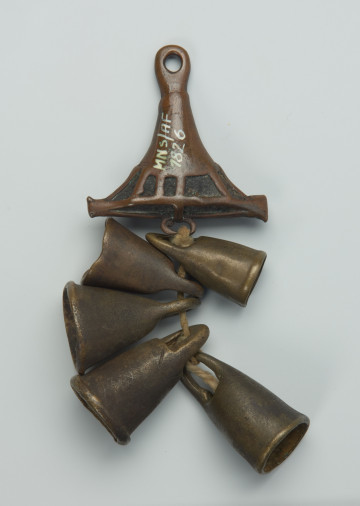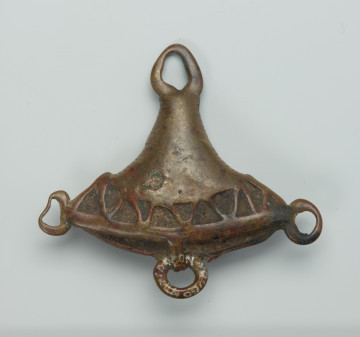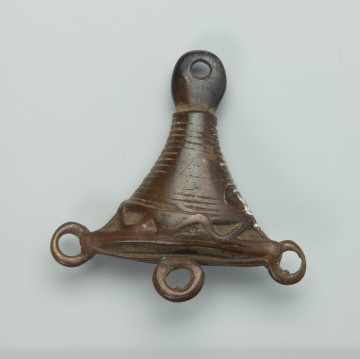
Pendant
między 1951 — 2000
National Museum in Szczecin
Part of the collection: Collection of Dogonian art
The ring was purchased during the Students' Ethnographic Expedition ‘Africa 76-77’, supervised by the National Museum in Szczecin. The Dogon considered it a product of the Tellem people, indigenous people inhabiting the Bandiagara Escarpment in the 11th-15th centuries. It is possible that a Dogon smith made this ring in imitation of the Tellem ornaments. Rings in the Dogon culture are worn, among others, by hogons - priests of the lebe cult, who sometimes also acted as chiefs of villages or groups of villages. The selection of a new hogon requires many consultations. Therefore, it can take even several years. In some villages, the oldest male inhabitant becomes the new hogon, while in others, the selection is made from among the oldest men. The new hogon takes up his position as priest of the lebe cult only one year after the election. During this time, his attire consists only of white robes. In the following year, a lavish ceremony is held, during which the traditional beer is consumed. From then on, a candidate for priest may wear the hogon costume, which is a voluminous black (indigo) tunic, a cylindrical red cap, sandals, a bracelet worn on the right leg, a ring-shaped earring, a ring worn on the finger of the right hand, and an iron necklace with dugo hogon usually in the form of a stone, which is imbued with the spiritual power of the Lebe ancestor. All elements of the hogan costume emphasise his high position in the Dogon social structure. Women with health problems also wear rings. They are made of iron and placed on ancestral family altars called ginna ommolo. While making offerings to the ancestors, they are poured with a sacrificial substance consisting of blood or millet porridge. The source of their healing power is the spiritual power of the ancestors. The Dogon believe that the power of the ancestors to whom the altar is sacrificed fuels the ring so that it can then be passed on to the sick woman, which speeds up the healing process.
Katarzyna Findlik-Gawron
Author / creator
Dimensions
cały obiekt: height: 4,4 cm, width: 2,6 cm
Object type
body adornment
Creation time / dating
Creation / finding place
Identification number
Location / status

między 1951 — 2000
National Museum in Szczecin

między 1951 — 2000
National Museum in Szczecin

między 1201 — 1500
National Museum in Szczecin
DISCOVER this TOPIC
National Museum in Lublin
DISCOVER this PATH
Educational path